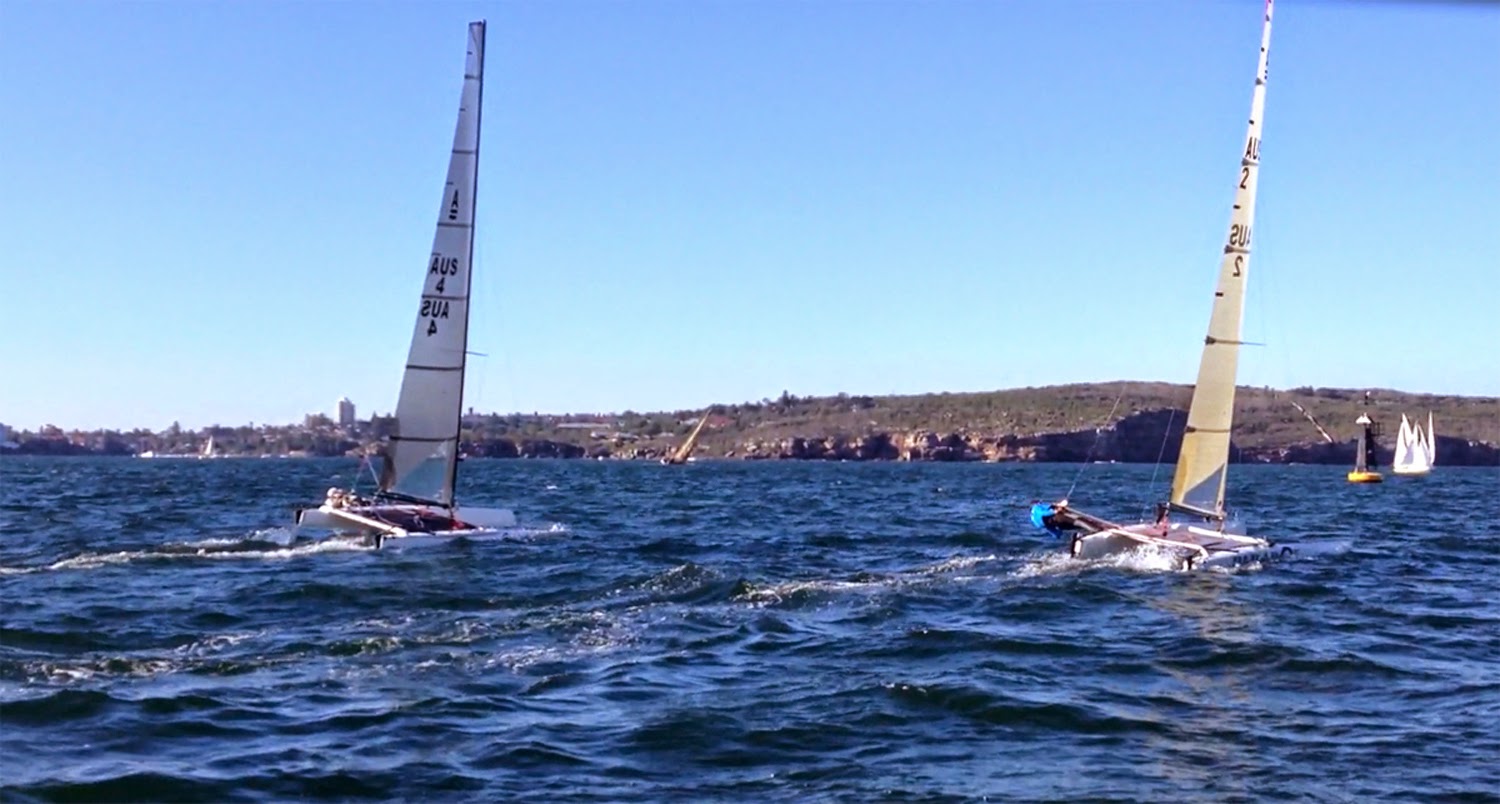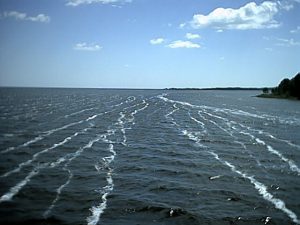

Recognising, Evaluating and Calling Puffs. Looking at the water on light air days with little cloud cover, it’s easier to see a puff approaching because the extra wind causes the surface of the water to ripple and change to a darker colour plus it will be moving away from the source which will tell you whether it’s an approaching lift or knock.
It’s always a little more difficult as the wind increases in strength or it’s overcast but by continually observing the water whenever you are out sailing, you will get better at recognising puffs and their direction.

Upwind
When you see a puff approaching even if it’s not your job to call puffs, it’s always good practice to run through the motions in your head, it’ll help you stay sharp the next time puff calling is your job.
When you see a line of breeze rolling down the course, there are four important pieces of information about the approaching wind that will make a difference to your helmsman and trimmers.
Is it a lifting or heading puff?
If it approaches from 45 degrees or forward of your course, it’s a heading puff, from 45 to 60 degrees, it’s a median puff, and from aft of 60 degrees, it’s a lifting puff.
How much more wind is it?
This helps the helmsman and trimmer know how much to adjust their trim and angle for the new wind.
How long will it last?
This tells the helmsman and trimmer how long they’ll sail with the new trim.
When will it hit?
A countdown helps the helmsman and trimmer time the adjustments they are making.
Downwind 
Calling puffs downwind is just as, if not more important than spotting incoming breeze upwind as you have more flexibility to sail higher or lower to meet the approaching puff.
When calling puffs downwind, ask yourself the same questions as you would sailing upwind: (Lift or header? How much wind? How long will it last? When will it hit?).
Make sure to converse with your trimmer and/or driver beforehand to determine the language that will be most helpful for them.
You have to remember that while you are looking up the course, your fellow crew trimming the sails will likely be looking down the course, or up at the sails.
Saying “puff coming on the right” might be confusing – your right, my right, course right, downwind right?
A good general rule is to call the puffs where they fall over the shoulder of your forward-facing crew members.
As an example, say”puff over your right shoulder,” this makes it easy for trimmers or helmsmen to look back over their shoulder to see the incoming breeze and react accordingly.


